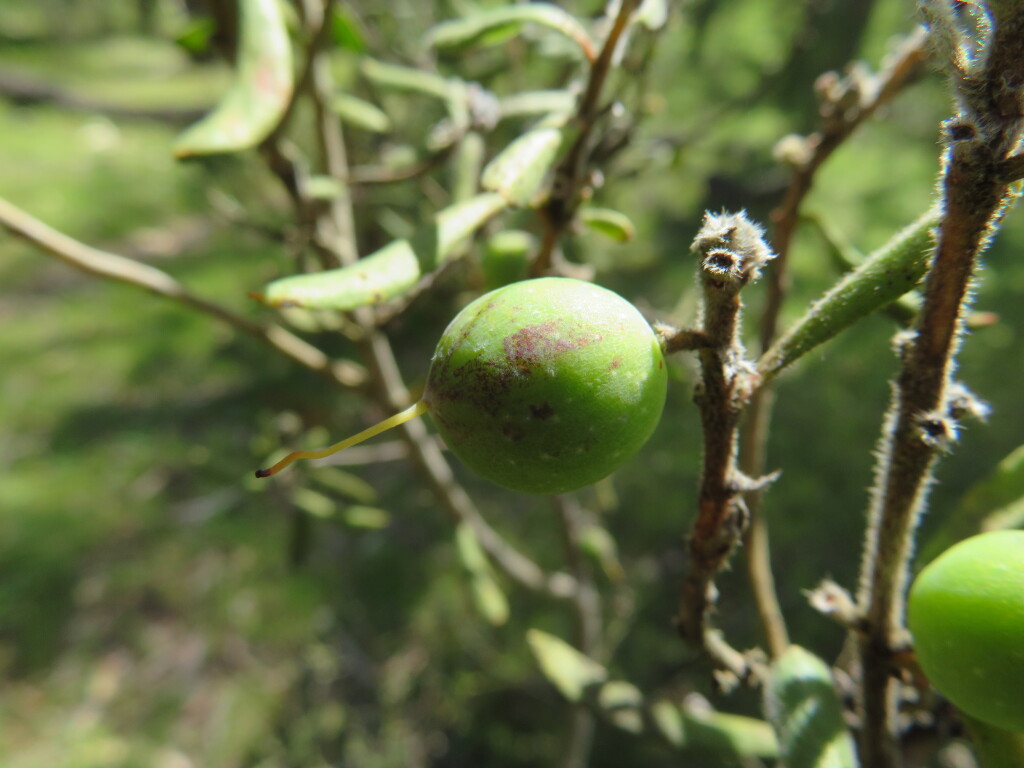Persoonia rigida
R.Br. Hairy GeebungErect to spreading shrub to c. 1 m high, rarely more; young branches moderately to densely hairy. Leaves alternate to subopposite, oblanceolate or narrowly spathulate to spathulate, 1.5–4 cm long, 4–20 mm wide, mucronate, curved upwards, dull green, flat or convex above, moderately to densely hairy when young, glabrescent to sparsely hairy when mature; margins recurved. Flowers solitary in axils of scale-leaves or leaves; pedicels 1–3 mm long, erect, moderately to densely hairy. Tepals 10–12 mm long, apiculate to caudate, moderately hairy, terminal spine to c. 1 mm long; anthers yellow; ovary glabrous. Drupe ovoid, to c. 14 mm long, c. 10 mm wide, green, often streaked purple. Flowers summer.
Wim, VVP, VRiv, Gold, CVU, GGr, NIS, EGU, HNF, VAlp. Also NSW, ACT. Widespread but scattered and generally uncommon, from mid-western to north-eastern Victoria (with disjunct occurrences near the upper Snowy River), in dry heathlands and woodlands.
Possible hybrids with P. juniperina have been observed in the Grampians, and these have previously been referred to as P. juniperina var. sericea (see also note under P. juniperina).
Jeanes, J.A. (1996). Proteaceae. In: Walsh, N.G.; Entwisle, T.J., Flora of Victoria Vol. 3, Dicotyledons Winteraceae to Myrtaceae, pp. 830–887. Inkata Press, Melbourne.
 Spinning
Spinning

